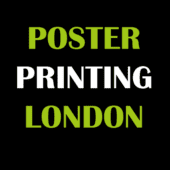Title: Mastering the Art of Poster Design: A Step-by-Step Guide
Posters are powerful visual tools that can convey messages, evoke emotions, and capture attention in a single glance. Whether you’re promoting an event, raising awareness for a cause, or simply expressing your creativity, knowing how to draw a compelling poster can make all the difference. In this guide, we’ll walk you through the process of creating an eye-catching poster that grabs the viewer’s attention and effectively communicates your message.
Step 1: Define Your Purpose and Audience
Before putting pen to paper, it’s essential to clarify the purpose of your poster and identify your target audience. Are you advertising a concert, a charity fundraiser, or a new product? Understanding your objectives will guide the design process and help you tailor your poster to resonate with your intended audience.
Step 2: Brainstorm Ideas and Conceptualize
Once you’ve established your goals, it’s time to brainstorm ideas and conceptualize your design. Consider the tone and mood you want to convey—whether it’s bold and energetic, elegant and sophisticated, or playful and whimsical. Sketch out rough drafts, experiment with different layouts and compositions, and explore various visual elements such as typography, imagery, and color schemes.
Step 3: Choose Your Tools and Materials
With your concept in mind, gather your tools and materials. Whether you prefer traditional methods or digital techniques, there are countless options available to bring your vision to life. From pencils, markers, and paints to graphic design software and digital tablets, choose the tools that best suit your style and proficiency.
Step 4: Design the Layout
Begin by sketching the basic layout of your poster, paying attention to the placement of text and imagery. Establish a focal point that draws the viewer’s eye and organically guides them through the poster. Experiment with different arrangements until you find a composition that is visually balanced and effectively communicates your message.
Step 5: Add Visual Elements and Typography
Next, incorporate visual elements and typography to enhance your poster’s appeal and readability. Select images, illustrations, or graphics that complement your theme and reinforce your message. Choose fonts that are legible, impactful, and reflective of your brand or style. Experiment with size, weight, and color to create hierarchy and emphasis.
Step 6: Refine and Edit
Once you’ve assembled all the elements, take a step back and evaluate your poster as a whole. Look for areas that may need refinement or adjustment—whether it’s tweaking the layout, fine-tuning the typography, or refining the color palette. Solicit feedback from peers or colleagues to gain fresh perspectives and identify any areas for improvement.
Step 7: Finalize and Print
After making any necessary revisions, it’s time to finalize your poster for printing. Ensure that your design meets the specifications for size, resolution, and file format required by your chosen printing method. Whether you’re printing at home, using a professional printing service, or sharing your poster digitally, double-check that everything is in order before proceeding.
Conclusion:
Drawing a poster is more than just putting images and text together—it’s a creative process that involves careful planning, experimentation, and attention to detail. By following these steps and unleashing your creativity, you can create posters that captivate audiences, convey messages effectively, and leave a lasting impression. Whether you’re a seasoned designer or a novice enthusiast, mastering the art of poster design opens up endless possibilities for creativity and expression.
